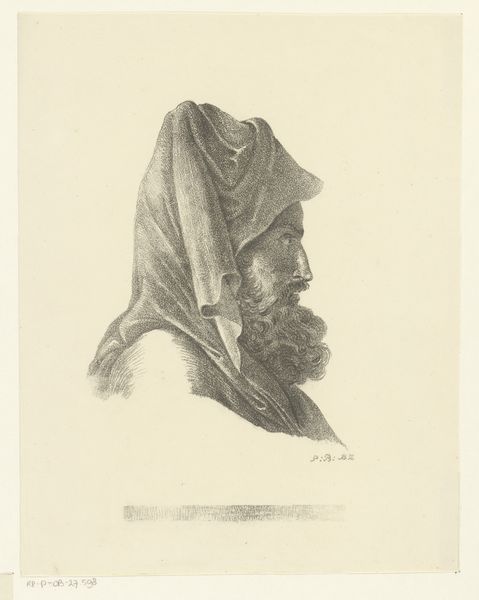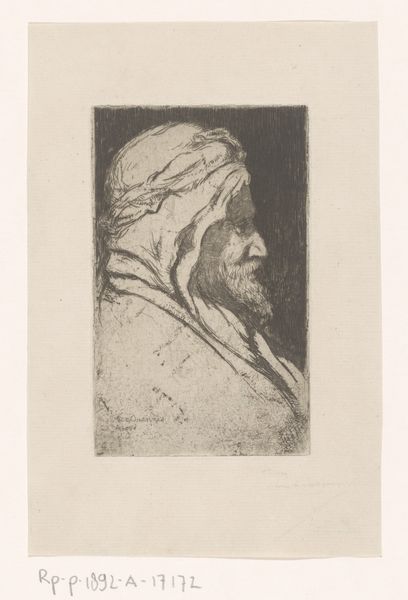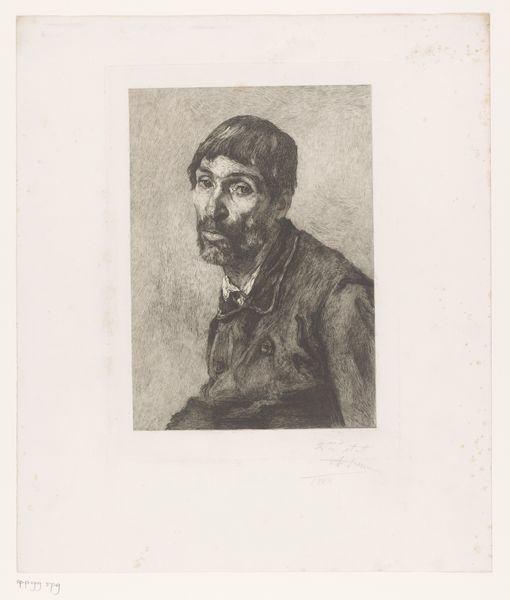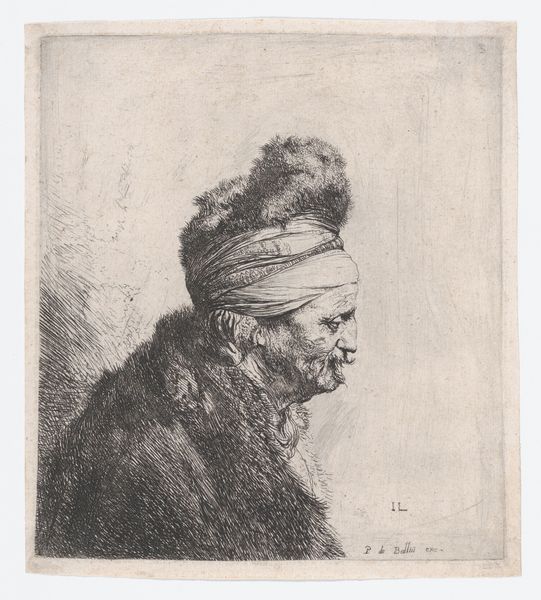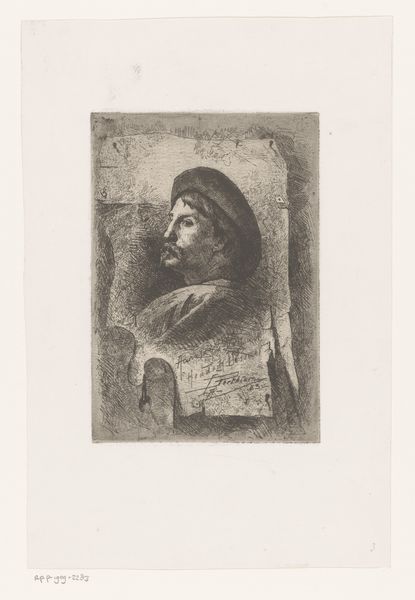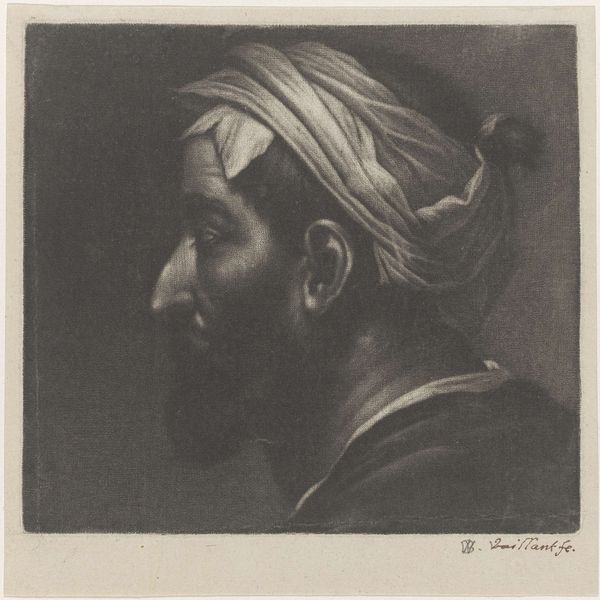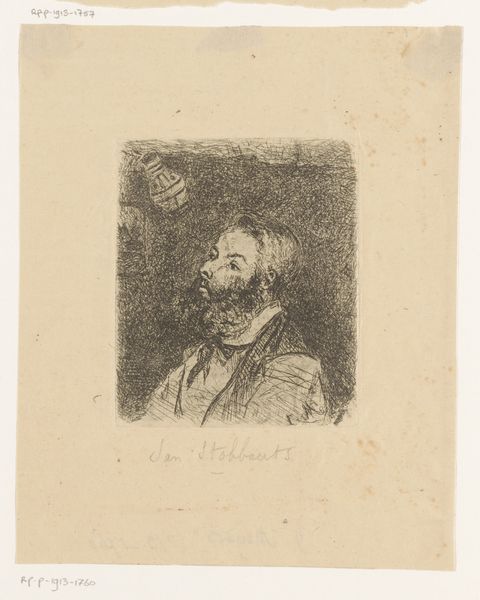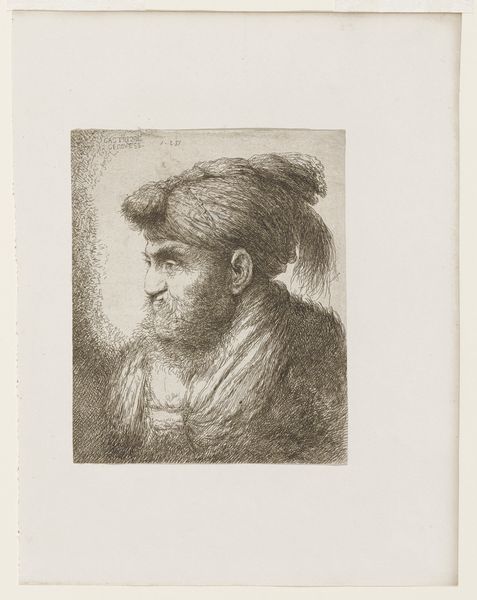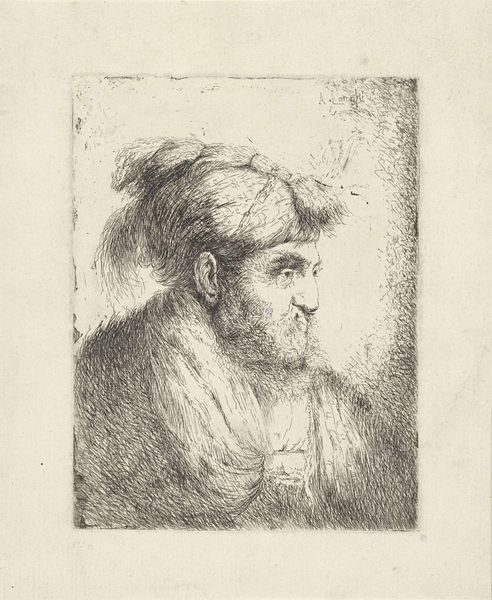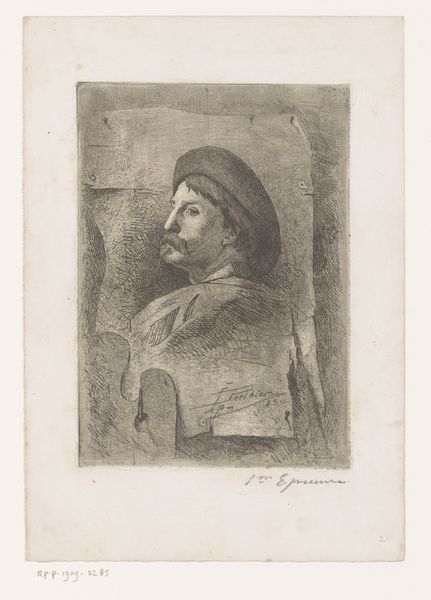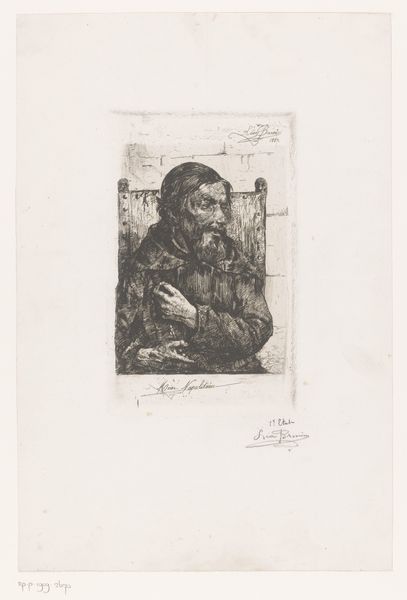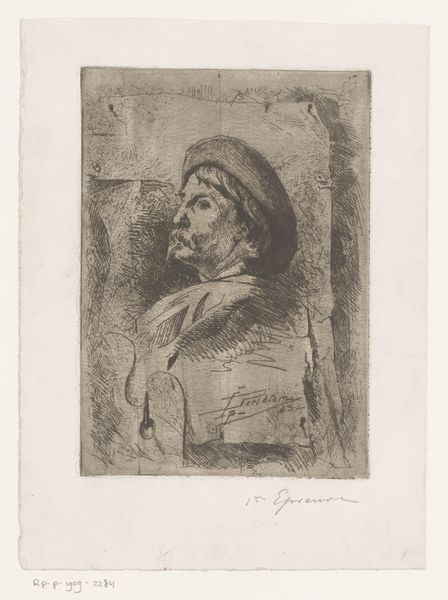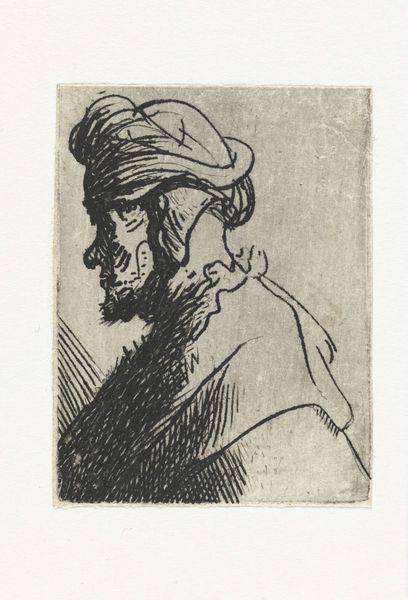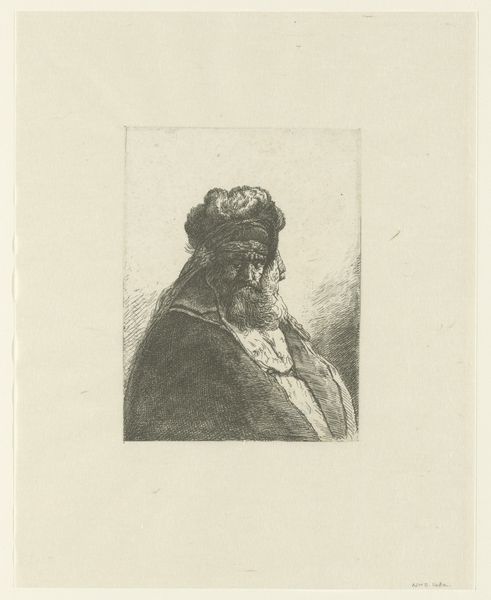
print, etching
#
portrait
# print
#
etching
#
old engraving style
#
academic-art
Dimensions: height 157 mm, width 119 mm
Copyright: Rijks Museum: Open Domain
Eugène Smits created this small etching, "Gewonde Soldaat," using a painstaking and indirect process. The image was first incised into a metal plate, likely copper or zinc, then inked and printed onto paper. The material qualities of the print are crucial here. Notice the delicate lines, the subtle gradations of tone achieved through hatching and cross-hatching. Smits's skill in manipulating the etching needle and acid bath, combined with his expertise in printing, has imbued the image with a unique sense of depth and texture. The work involved would have been considerable, demanding not only artistic vision, but also a mastery of technique passed down through generations of printmakers. The very act of etching is tied to broader social issues. The rise of printmaking was closely linked to the growth of capitalism and the increasing demand for accessible imagery. Prints were relatively inexpensive and could be widely disseminated, making them a powerful tool for communication and propaganda. Ultimately, this etching reminds us that art is not just about ideas, but also about the skilled manipulation of materials and the social forces that shape their production. By appreciating the materiality and making of this print, we can gain a deeper understanding of its meaning and significance.
Comments
No comments
Be the first to comment and join the conversation on the ultimate creative platform.
